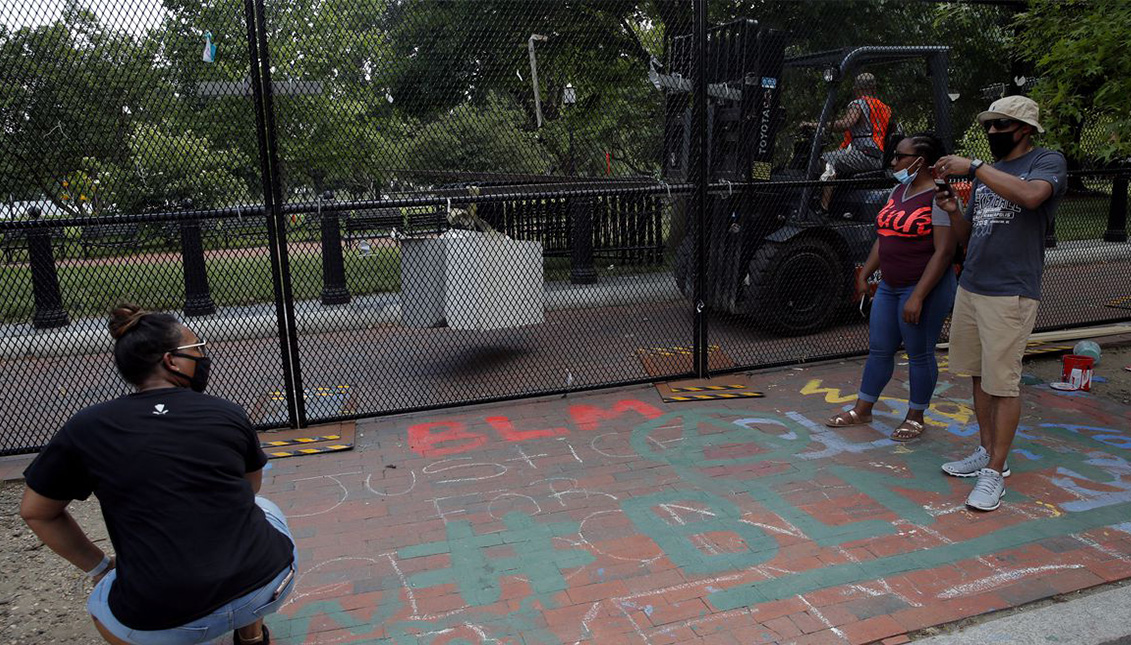
Saving the protest art of Black Lives Matter Plaza
If you don't like what you see, draw the curtains, Mr. Trump.
Crucifixes, portraits of George Floyd, posters and even balloons and birthday cards dedicated to Breonna Taylor were hanging until a few days ago from the fence that was erected around Washington's Lafayette Park on June 1, so that President Trump could have his picture taken without being disturbed by the protesters who crowded around the perimeter of the White House denouncing police violence against African Americans and who were harshly repressed with pepper spray and smoke bombs.
However, as the days passed, the citizens gave new meaning to that fence which became an open-air gallery of protest art, and much more than that, a living piece of American history. So much so that the Washington government renamed the place the Black Lives Matter Plaza.
Now groups of volunteers have come together to collect the artwork hanging on the fence for fear that it will be torn down or damaged and with the apparent promise, or rather interest, of the Smithsonian and the city government to preserve it as an artistic and cultural heritage site.
"When we first approached them, we were surprised that we didn't see any signs on the fence as we did on television, and we wondered, you know, if they took them down because they didn't want to be taken down or destroyed," Lakeisha Dames, a Maryland resident who brought her 7-year-old daughter, Victoria, to witness the scene, told AP.
"As we walked further down (16th Street), you could see that all the signs were still here. And we're grateful for that because we still have a chance to see it. And it's an amazing thing to experience," he added.
RELATED CONTENT
The Park Service said Wednesday that the Secret Service "continues to remove the temporary fence around Lafayette Park, and the public will have access to Lafayette Park beginning June 11," while the fence on the southern side of the White House is also being dismantled. Hence the urgency for volunteers to keep track of the protests.
"We're trying to be as gentle as we can with everything," one of the volunteers, Natalie Casey-Sanger, told AP. "I've heard some people express hope for long-term plans but nothing concrete.
The work began Tuesday night because the Park Service had announced it would remove the fence on Wednesday, but then they put the brakes on.
A spokesman for the National Museum of African American History and Culture, Jason Spear, said they are interested in talking further with people about a possible collection of the objects.
Meanwhile, Washington Mayor Muriel Bowser said earlier this week that the area around the intersection of 16th and H Streets in front of the White House "will have a central place not only in D.C. history but in the history of the United States.
Bowser also admitted his administration's interest in "preserving the artifacts from the protests," noting that workers from the city's Department of Public Works have been helping move the items for safekeeping, as he hopes to see these messages and symbols "in our own archives or shared with other institutions.











LEAVE A COMMENT: